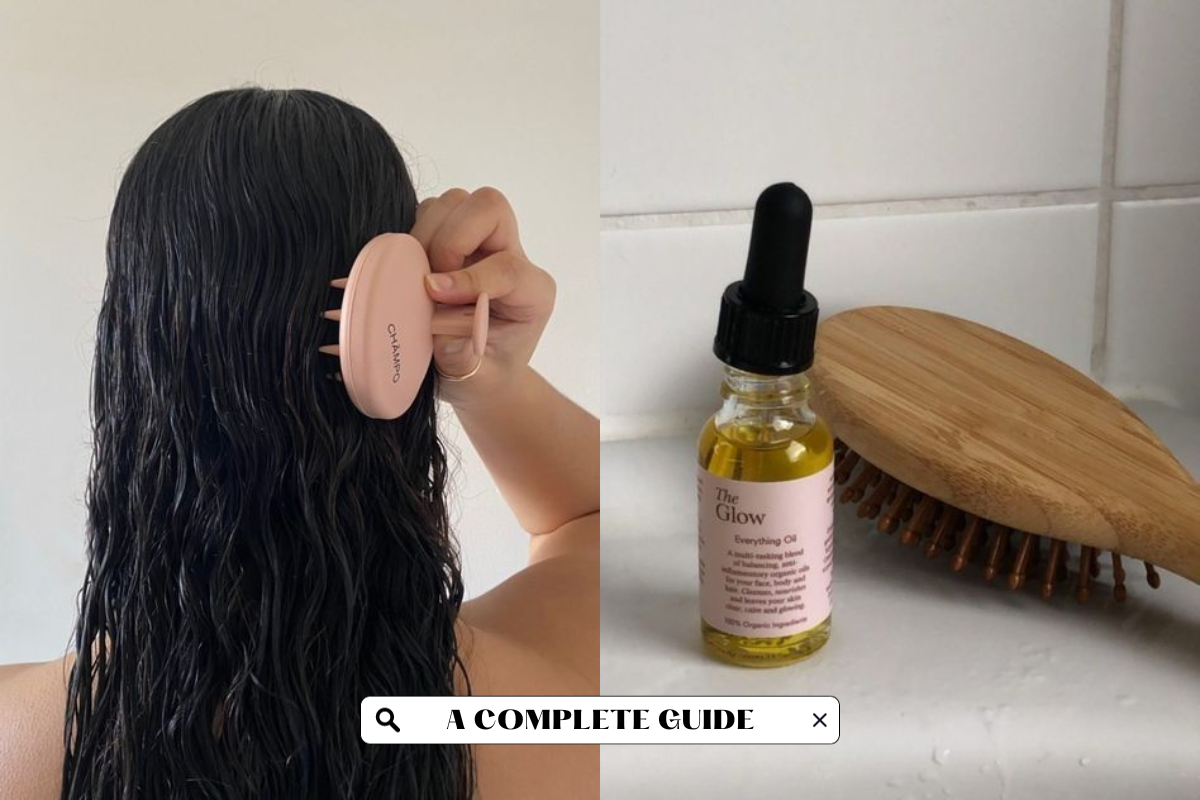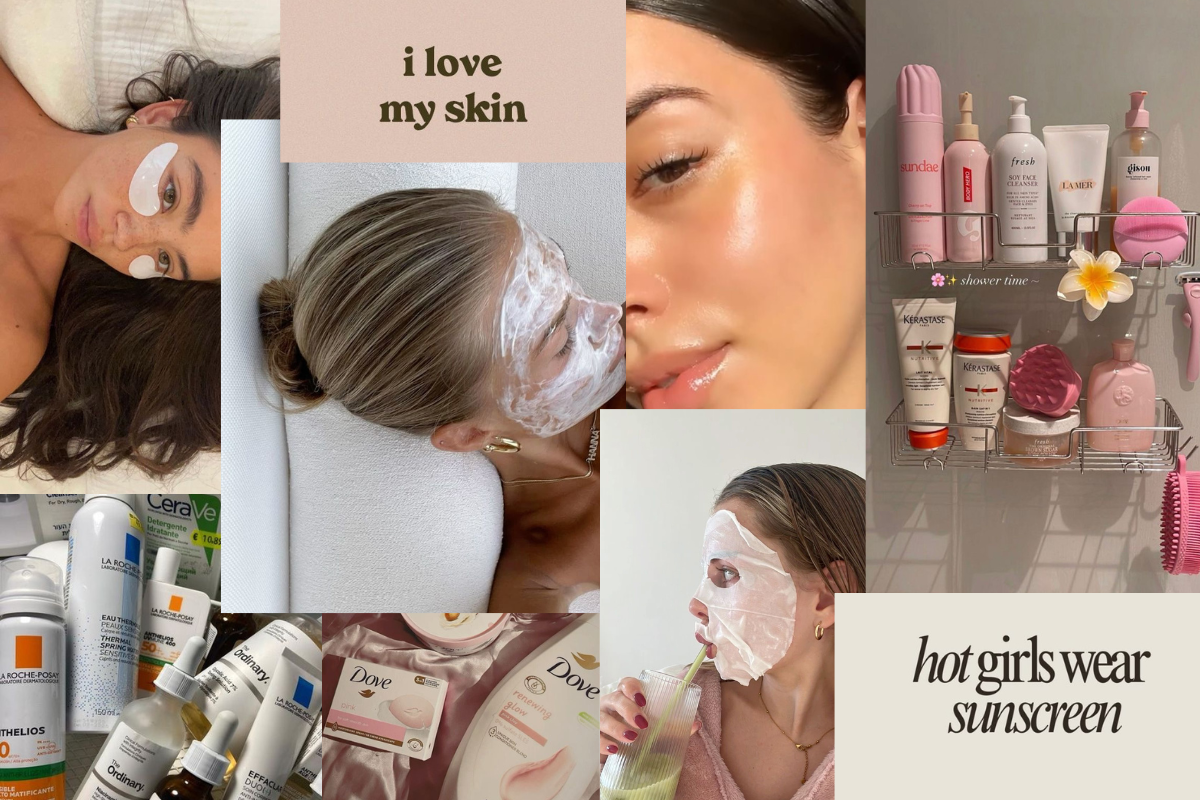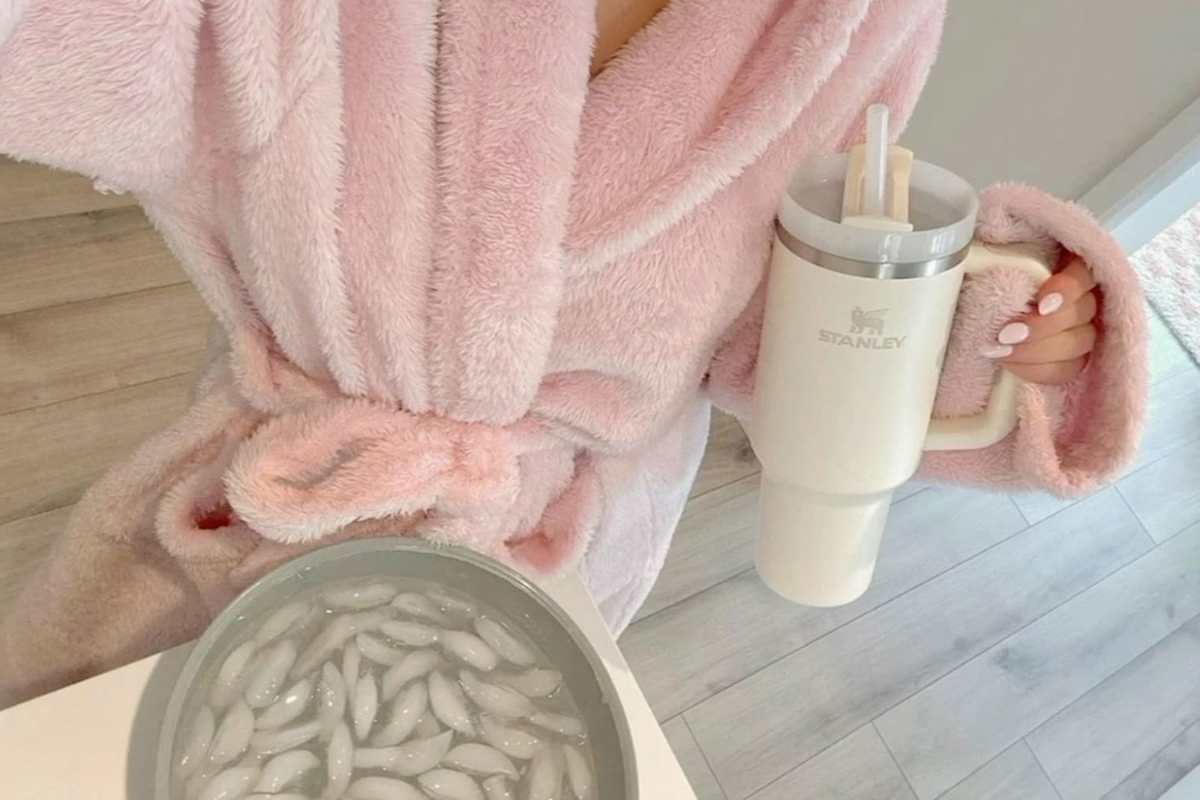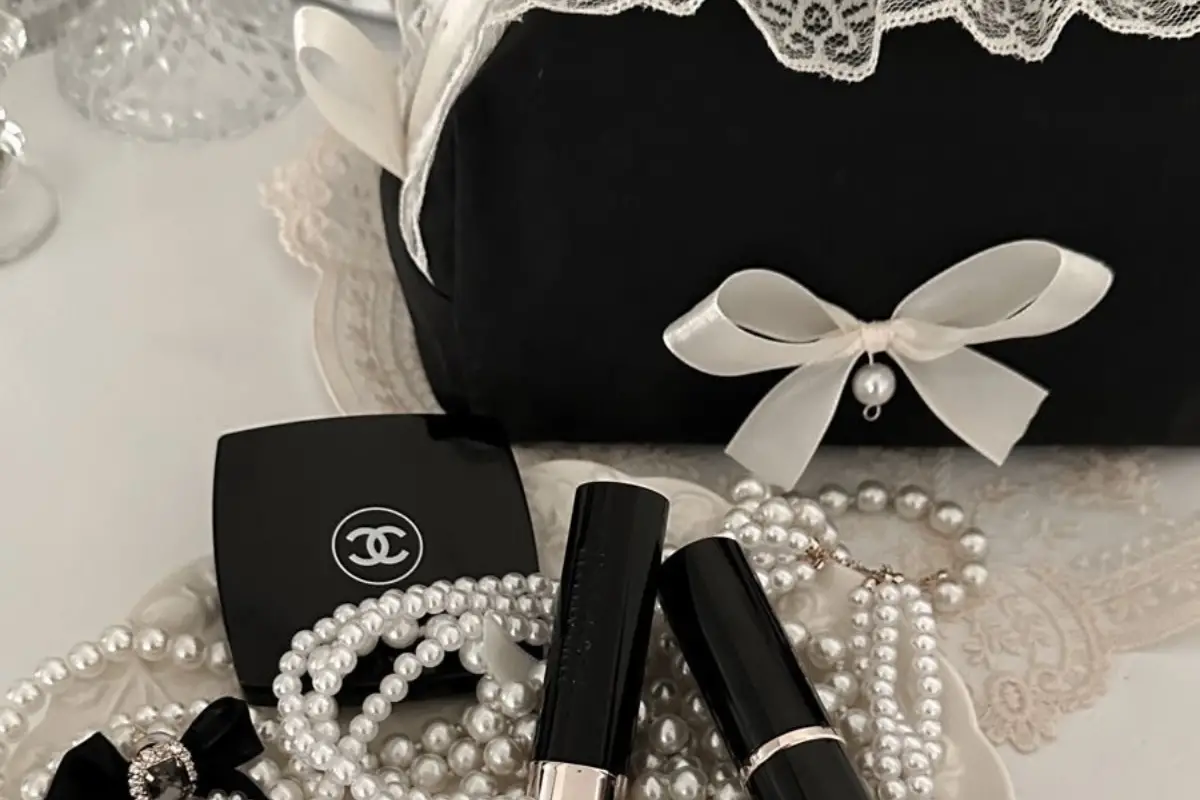Unlock the Secrets to Healthy Hair Growth
- Beauty

- Written byYour Local It Girl
- |01/11/2024
Having luscious, vibrant locks is a common desire for many, but achieving and maintaining healthy hair growth requires a holistic approach. In this guide, we’ll delve into essential aspects of hair care, including the role of vitamins and nutrients, the power of oils, the significance of keratin, protein treatments, caffeine for follicle stimulation, the importance of regular trims, the right shampoo choices, minimizing hair-touching habits, and establishing a consistent hair care routine.
1. Nutrients and Vitamins: The Foundation for Hair Health
Hair growth is closely linked to the nutrients and vitamins your body receives. Incorporate the following into your diet to support healthy hair growth:
- Vitamin A: Promotes the production of sebum, an oily substance that helps keep the scalp moisturized.
- B Vitamins (Biotin, B5, B12): Essential for cell division and the production of red blood cells, supporting hair follicle health.
- Vitamin E: Acts as an antioxidant, protecting hair follicles from oxidative stress.
- Iron and Zinc: Vital for hair growth and preventing hair thinning.
2. Oils: Nourish Your Locks Naturally
Incorporating these oils into your hair care routine can provide a natural and effective way to nourish your locks, enhance their health, and promote optimal hair growth. Experiment with different oils to find the ones that work best for your hair type and specific needs.
3. Keratin and Protein Treatments: Building Blocks for Stronger Hair
Hair is primarily composed of keratin, a protein. Regular protein treatments can strengthen and repair damaged hair. Consider protein-rich hair masks or salon treatments to boost keratin levels.
Understanding Keratin: Keratin serves as the fundamental building block of hair structure. It is a fibrous protein that provides the hair with its strength, structure, and flexibility. Over time, factors such as heat styling, exposure to the sun, and chemical processes can weaken the protein structure, making the hair more prone to damage.
Benefits of Protein Treatments: Protein treatments are specifically formulated to replenish the protein content in the hair, reinforcing its structure and restoring lost strength. These treatments work by filling in gaps and cracks along the hair shaft, effectively repairing damage caused by external stressors.
4. Caffeine for Follicle Stimulation
Recent research has indeed shed light on the potential benefits of caffeine in promoting hair growth and stimulating hair follicles. Caffeine, commonly found in coffee, tea, and certain hair care products, has been shown to have positive effects on the hair growth cycle. Here’s how caffeine can contribute to follicle stimulation and hair health:
1. Improved Blood Circulation: Caffeine has vasodilator properties, which means it can widen blood vessels. When applied topically, it may enhance blood circulation to the hair follicles. Improved blood flow ensures that essential nutrients and oxygen reach the follicles more efficiently, promoting a healthier environment for hair growth.
2. DHT Blockage: Dihydrotestosterone (DHT) is a hormone linked to hair loss, particularly in individuals with a genetic predisposition to androgenetic alopecia (pattern baldness). Some studies suggest that caffeine may inhibit the effects of DHT, thereby potentially reducing hair thinning and promoting hair retention.
3. Prolonging Anagen Phase: The hair growth cycle consists of three phases: anagen (growth), catagen (transitional), and telogen (resting). Caffeine has been found to lengthen the anagen phase, meaning it may support longer periods of active hair growth before the hair transitions to the next phase.
5. Regular Trims: A Crucial Step in Hair Care
Dispelling the common misconception that frequent trims impede hair growth, the reality is quite the opposite – regular trims are a fundamental component of a comprehensive hair care routine. Far from hindering growth, consistent trimming is a proactive measure that helps preserve the integrity of your hair, contributing to its overall health and appearance. Here’s why regular trims are considered crucial for maintaining vibrant and strong locks:
1. Prevention of Split Ends: Split ends occur when the hair shaft becomes frayed and splits into two or more sections. Without timely intervention, split ends can travel up the hair shaft, causing more extensive damage. Regular trims eliminate existing split ends and prevent them from progressing, preserving the quality and appearance of your hair.
2. Reduction of Breakage: Hair that is prone to split ends is more susceptible to breakage. Trimming removes weakened and damaged portions of the hair, reducing the likelihood of breakage. This is especially important for individuals seeking to maintain longer hair, as preventing breakage helps retain length over time.
3. Prevention of Tangling and Knots: Trimming helps maintain smoother and more manageable hair by preventing tangles and knots. Removing damaged ends reduces friction between strands, making it easier to comb or brush your hair without causing unnecessary stress.
Recommended Frequency
To maintain optimal hair health, experts often recommend scheduling trims every 6 to 8 weeks. This interval allows for the removal of any emerging split ends before they escalate, ensuring that your hair stays in its best possible condition.
6. Shampooing: Strike the Right Balance
Finding the right balance in your shampooing routine is key to maintaining healthy and vibrant hair. Over-shampooing can strip the hair of its natural oils, leading to dryness, breakage, and other related issues. Here’s a guide to help you strike the right balance in your shampooing habits:
1. Sulfate-Free Shampoo: Choose a sulfate-free shampoo to minimize the harsh effects of sulfates, which are detergents commonly found in many commercial shampoos. Sulfates can be overly stripping, especially for individuals with dry or curly hair. Sulfate-free formulations help clean the hair without excessively removing its natural oils, promoting a healthier and more balanced scalp.
2. Frequency of Shampooing: Washing your hair too frequently can contribute to dryness and potential damage. Aim to shampoo your hair 2-3 times a week, adjusting the frequency based on your hair type, lifestyle, and personal preferences. This allows your scalp to maintain a natural balance of oils, preventing over-drying and promoting overall hair health.
3. Hair Porosity Test: Consider conducting a hair porosity test to determine the porosity level of your hair. Hair porosity refers to how well your hair can absorb and retain moisture. Understanding your hair’s porosity can help you choose products that cater to its specific needs. Low porosity hair may benefit from lighter formulations, while high porosity hair might require more moisturizing products.
How to Perform a Hair Porosity Test:
- Take a clean strand of hair.
- Drop it into a bowl of water.
- Observe how the hair behaves:
- Low Porosity: Hair floats on the water’s surface.
- Normal Porosity: Hair sinks slowly.
- High Porosity: Hair sinks quickly.
4. Proper Shampooing Technique: When shampooing, focus on the roots and scalp. Gently massage the scalp to remove dirt and excess oil. Allow the shampoo to cleanse the lengths of your hair as you rinse it out. Avoid vigorously scrubbing the lengths, as this can contribute to tangling and breakage.
7. Stop Touching Your Hair: Minimize Breakage
Minimizing breakage is a crucial aspect of maintaining healthy hair, and one effective way to achieve this is by adopting mindful practices that reduce unnecessary stress on your strands. Here are key recommendations to help prevent breakage and promote overall hair health:
1. Avoid Excessive Touching, Styling, and Pulling: Frequent touching, styling, and pulling of your hair can lead to breakage, especially if done with excessive force. Minimize running your fingers through your hair unnecessarily, and be gentle when detangling. Avoid tight hairstyles that pull on the hair shafts, such as tight ponytails or braids, as they can contribute to breakage over time.
2. Handle Your Hair Gently: When washing, conditioning, and styling your hair, handle it with care. Use a wide-toothed comb or a detangling brush to gently remove knots and tangles. Pat your hair dry with a soft towel rather than rubbing vigorously, and avoid using excessive heat or tension during styling.
Conclusion
Embarking on a hair care journey involves a holistic approach. By understanding your hair’s unique needs, providing essential nutrients, and adopting healthy habits, you can nurture vibrant, healthy hair growth. Remember, patience is key – consistent care over time yields the best results. Whether it’s determining porosity, avoiding tight hairstyles, or choosing the right products, these practices contribute to a comprehensive strategy for maintaining and enhancing the natural beauty of your hair.
Related Posts
FOLLOW @YOURLOCALITGIRL
ELSEWHERE
0.2k
11k
Subscribers
0.2k
FOLLOW @YOURLOCALITGIRL
ELSEWHERE
0.2k
11k
Subscribers











